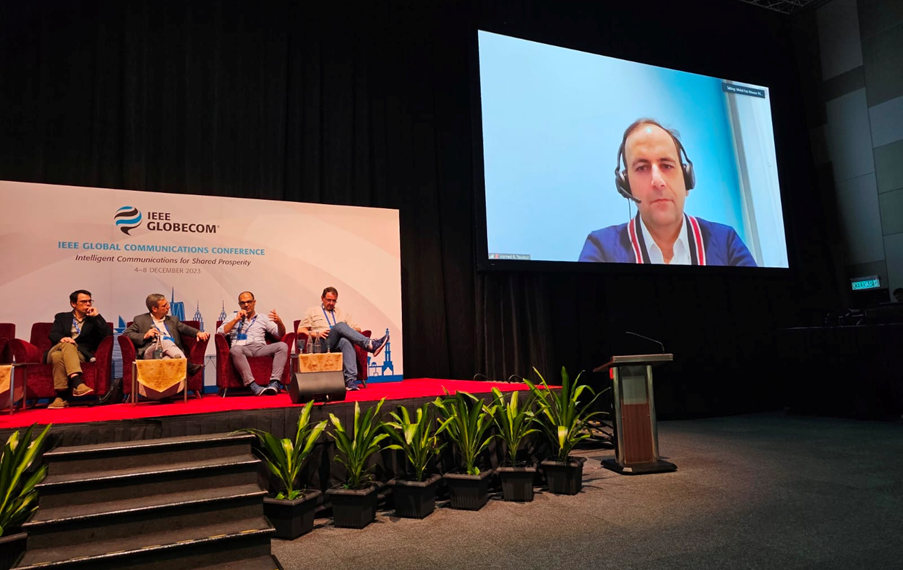After almost one year, the CONVERGE project (coordinated by INESC TEC) has already showed relevant outcomes at one of the main conferences of the IEEE Communications Society, the GLOBECOM (Malaysia) – namely, through the organisation of a panel. “Convergence of wireless communications and computer vision: a new paradigm created by the CONVERGE project” sought to discuss the new opportunities and potential challenges associated with the use of tools that combine radio with computer vision.
The future of telecommunications means convergence: we communicate to see, we see to communicate. With the arrival of 6G, it is increasingly important to create tools that allow exploring the balance between technologies like wireless communications and computer vision, while supporting the scientific community. What will be the impact of said tools? How can they foster the development of new technologies and means of communication? How to ensure data protection?
These were some of the issues discussed by the panel that highlighted the importance of enabling next-generation wireless communications with technologies like multimodal vision and sensing, making it possible to track users even without a mobile device, efficiently manage communications beams, and control reconfigurable smart surfaces. In addition, the panel members stressed the importance of preparing the ground for the incorporation of new integrated sensing and communications (ISAC), which will allow advanced wireless connections and greater sensing capacity – also enabling the development of new applications: semantic communications, holographic communications, or digital twins.
Scientific progress in this field requires remotely accessible research infrastructures, as explained by Luís Pessoa, INESC TEC researcher and leader of the CONVERGE project: “this project will allow testing real physical equipment, simulating computer models (digital twin), exploring Artificial Intelligence algorithms and gathering synchronised radio-vision datasets that may be available as open data to the community. Above all, we believe that duplicability is the key to scientific progress and to the telecommunications industry itself”.
In this edition, GLOBECOM welcomed more than 2000 participants from 70 countries, representing one of the world’s largest events in telecommunications. “It is an important milestone for CONVERGE to have been accepted to streamline an Industry Panel, in the first year of execution. This was an excellent platform to disseminate the project to a wider and specialised audience, also allowing the community to engage in a dynamic discussion around these topics”, said the researcher
Manuel Ricardo, Associate Director of INESC TEC (moderator), and Luís Pessoa represented INESC TEC in this panel. They were joined by Youssef Nasser (Greenerwave), Ivan Seskar (Rutgers University), Hamed Tavakoli (Nokia) and Serge Fdida (University of Sorbonne).
The researchers mentioned in this news piece are associated with INESC TEC and UP-FEUP.




 News, current topics, curiosities and so much more about INESC TEC and its community!
News, current topics, curiosities and so much more about INESC TEC and its community!